Science Experiments How-Tos

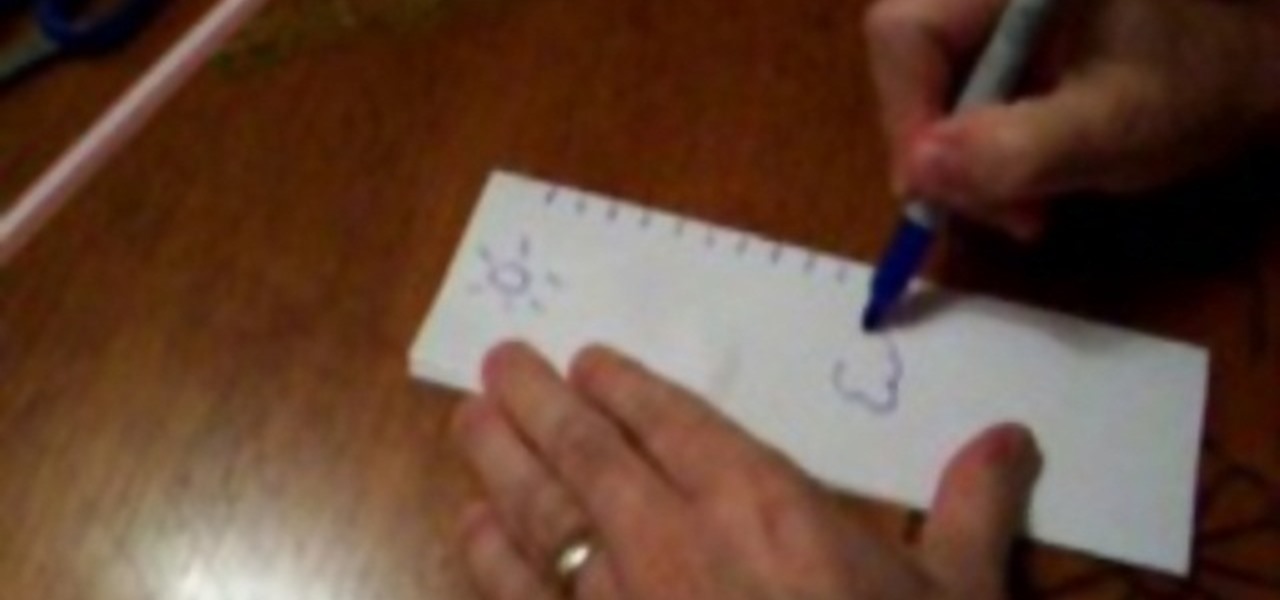
How To: Make a barometer with easy household items
Forget about the weather channel. Radio and TV seem not able to predict the darn weather anyway. Make Your own barometer within the next few minutes! Become the weatherman of the house! You will need an empty jar, scotch tape, a balloon, a tubber band, scissors, a straw, a ruler, a sheet of paper and a marker.
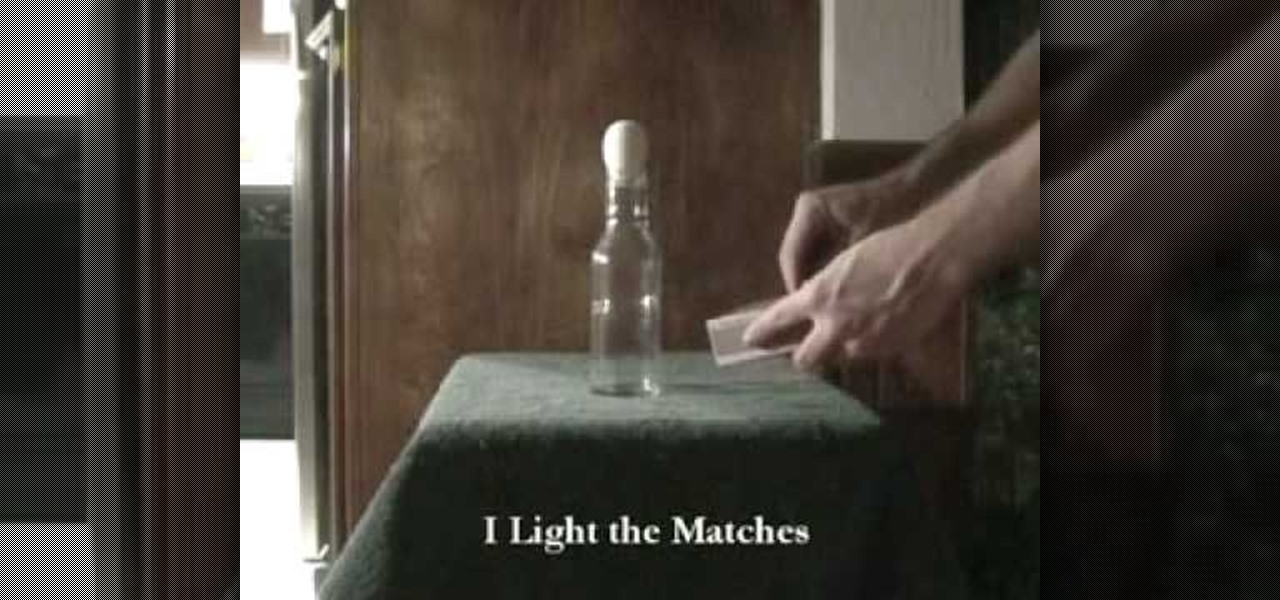
How To: Suck a Hard-Boiled Egg into a Bottle with a Burning Match
Can you suck an egg into a bottle? Let's find out. For this quick science experiment, you will need an egg, a bottle, and matches. Simply drop a match in the bottle and place the hard-boiled egg on top and watch it get sucked in.
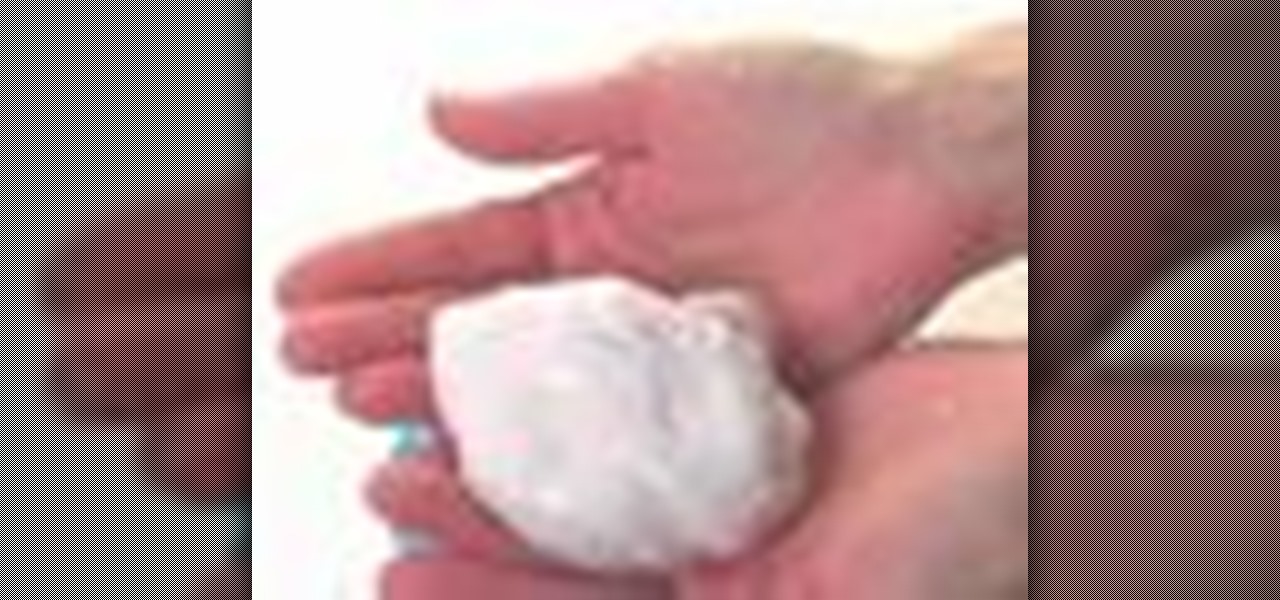
How To: Make poly silly putty
Ingredients: White multi-purpose glue (do not use washable glue)

How To: Make a balloon ball
You will need round shaped balloons. Blow up your balloon the size of a fist. If you make it too big, it is hard to work with. Next, take a balloon and cut off the neck. Stretch the balloon over the inflated one. Repeat these steps until you have a bouncy balloon ball. Make a balloon ball.

How To: Make copper sulfate crystals
Learn how to make a copper sulfate crystal. Warning: Copper sulfate is not good for your skin, so if you get any on it, clean well with water. If you eat it, call a doctor. You will need once cleaned out egg with a hole in the top, some copper sulfid (you can get it in garden shops), and 60 ml of hot water. Easy way to make your own crystals.

How To: Repel pepper with your finger in a science experiment
This experiment is very easy and inexpensive. It can be done at home. You will need a bowl, some water, some pepper, and some soap. You can use your finger to repel pepper, to the sides of the bowl. Simple, but fun.
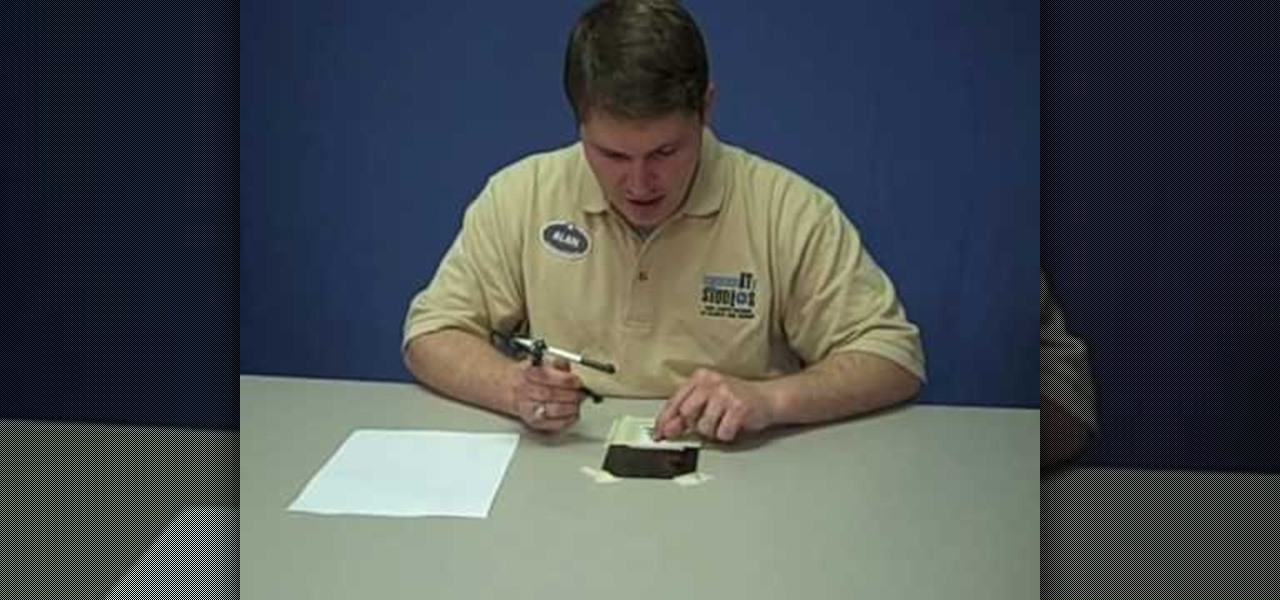
How To: Make your own scratch holograms
Holography is the scattering of light from an object, which is recorded and reconstructed to create the hologram. As the viewer or viewing mechanism moves, the image appears three dimensional. This instructional video shows how to craft 3 dimensional holograms using scratched arcs on a reflective surface. Using a compass, a picture, and Plexiglas, you can create glowing images that shift and turn inside of a 2 dimensional plane. Who would of thought? Now you can make your very own holograms a...

How To: Demonstrate buoyancy with diet & regular Coke
This will blow you away! 2 unopened 12 ounce cans of cola weigh the same, right? No they do not. That's why Diet Coke floats, but regular sugared Coke sinks. The extra weight comes from the natural sugar in Coca Cola and Pepsi that is not present in a can of diet.
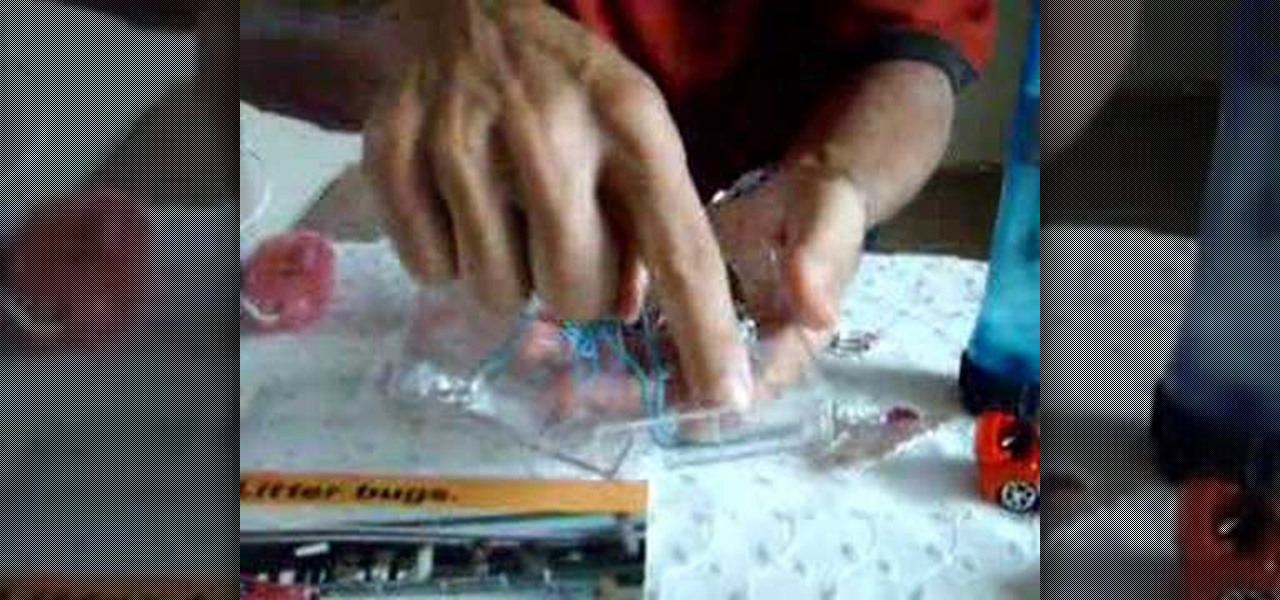
How To: Create magnetically controlled gadgets
Make your gadgets magnetically controlled with everyday things. People often take for granted the common items and devices they use in everyday life. Looks can be deceiving. It's not what things appear to be, it's what they can become.
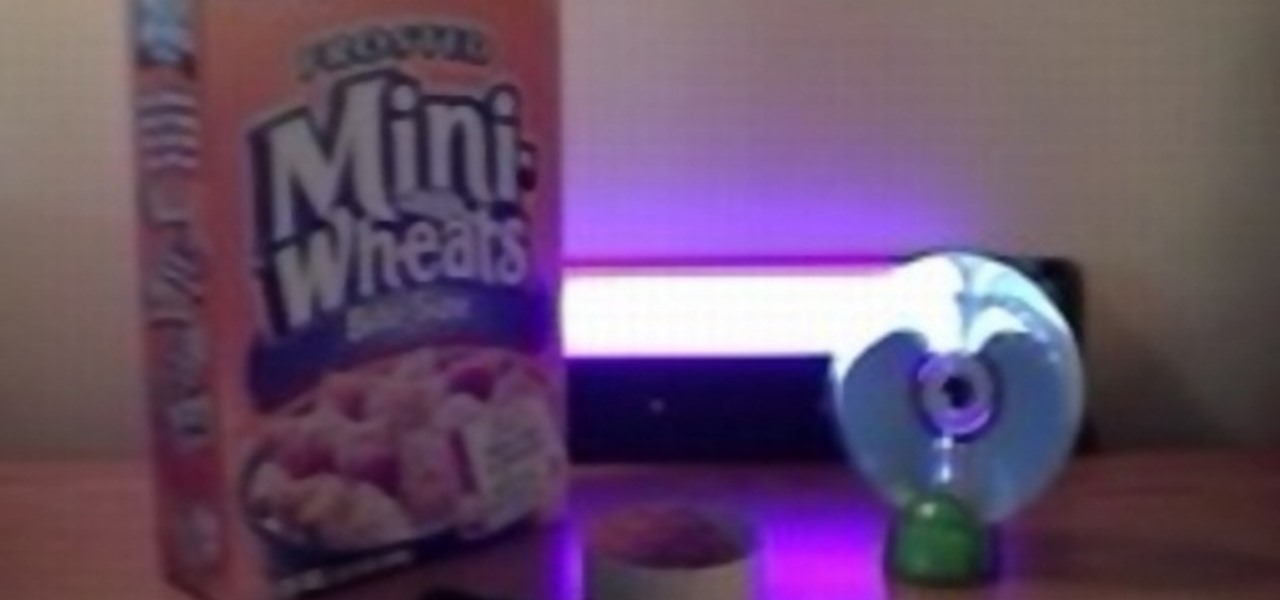
How To: Make a cereal box spectrometer
A spectrometer is an optical instrument used to measure properties of light over a specific portion of the electromagnetic spectrum. This video will show you how to make a spectrometer out of a cereal box and a compact disc. This spectroscope is sure to amaze your kids for a nifty science project.

How To: Nuke things for cool reactions in the microwave
Want to make cool explosions in your microwave. Here's some stuff that lights up real nice. Lets see what you can put nuke in the microwave!!! Try CDs or new CFL light bulbs.
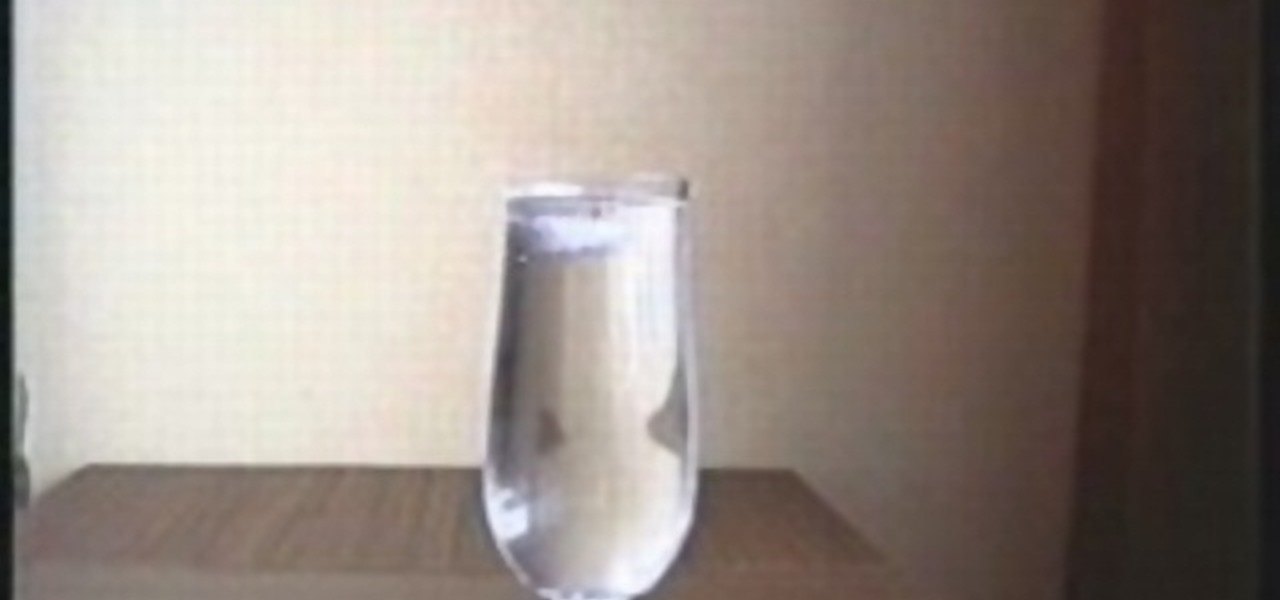
How To: Make ice glue
Is it possible to glue an ice cube? You have to see it!
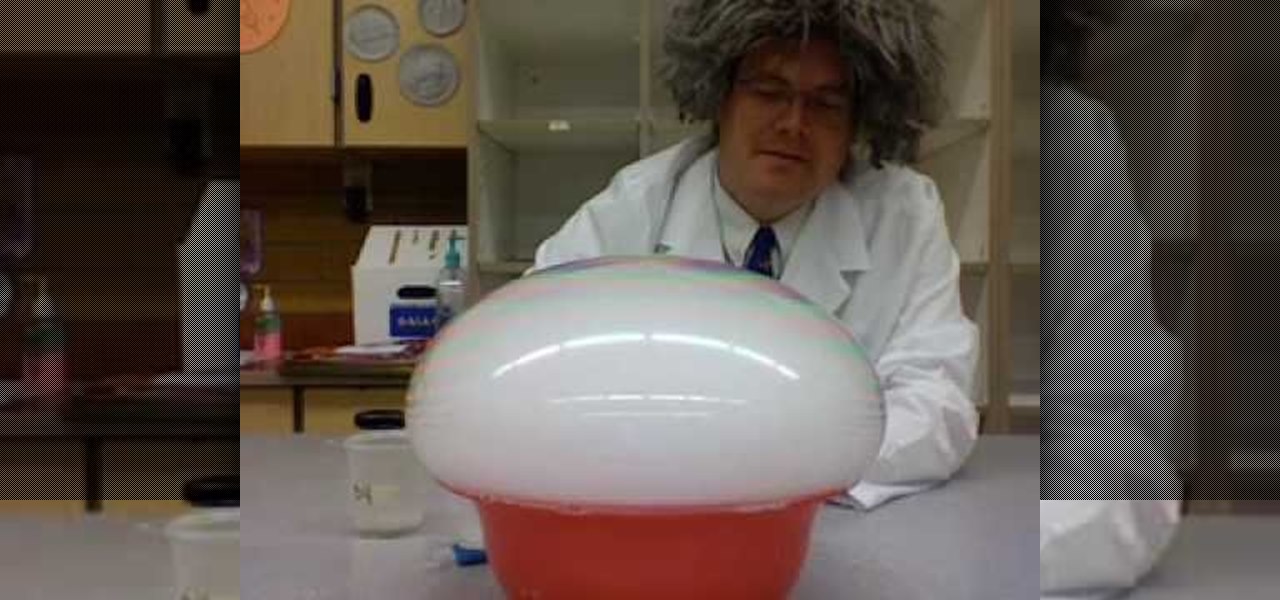
How To: Make exploding dry ice bubbles
This is a dry ice experiment for Halloween fun with bubbles. Mr Brunner shows us how to grow dry ice bubbles in buckets. This experiment is super easy and very interesting. You need soap, cloth strips and a big bowl. Oh and of course dry ice. This takes a couple of minutes to explode so be patient.
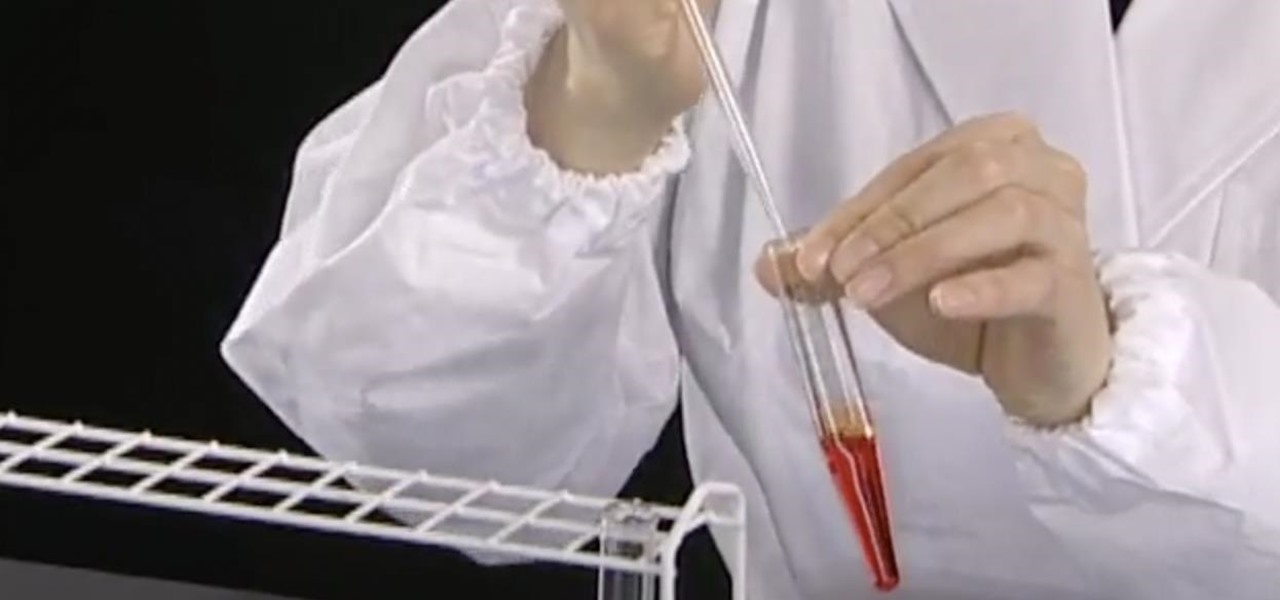
How To: Use Transfer Pipettes and Wash Bottles in the Chem Lab
Find out how everything in a chemistry lab works, from pipettes to burners to recrystallization to storage. You'll get precise instructions on how to work and perform certain scientific duties in the chem lab, whether it's chemical or just ordinary high school science.
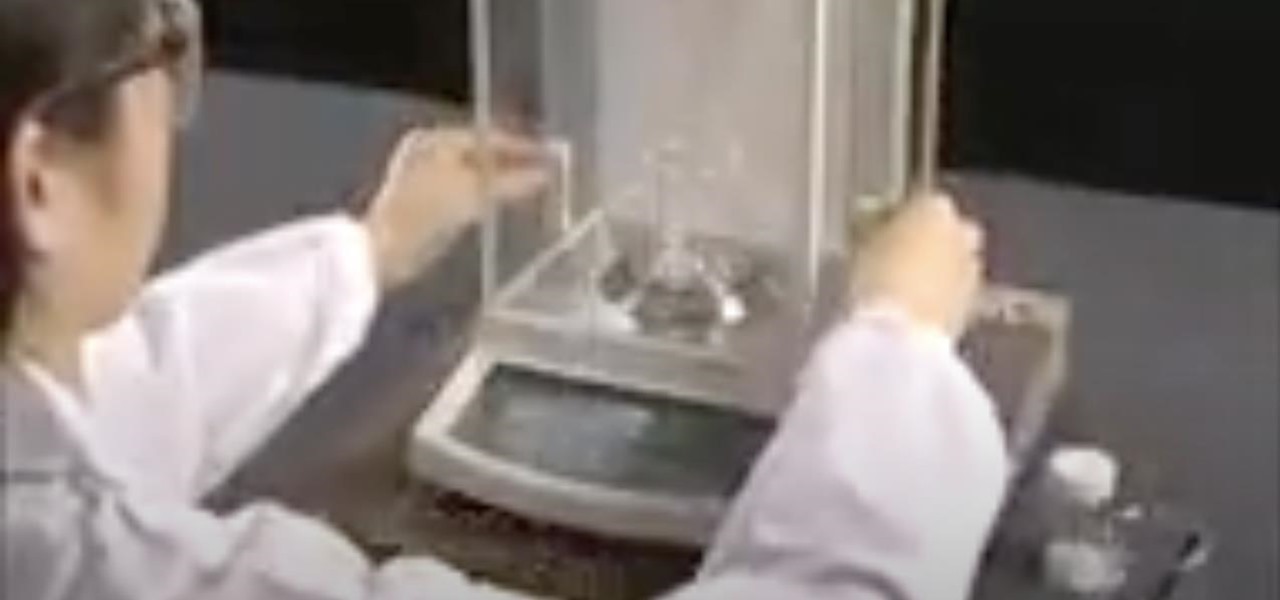
How To: Use an Electronic Balance in the Chemistry Lab
Find out how everything in a chemistry lab works, from pipettes to burners to recrystallization to storage. You'll get precise instructions on how to work and perform certain scientific duties in the chem lab, whether it's chemical or just ordinary high school science.
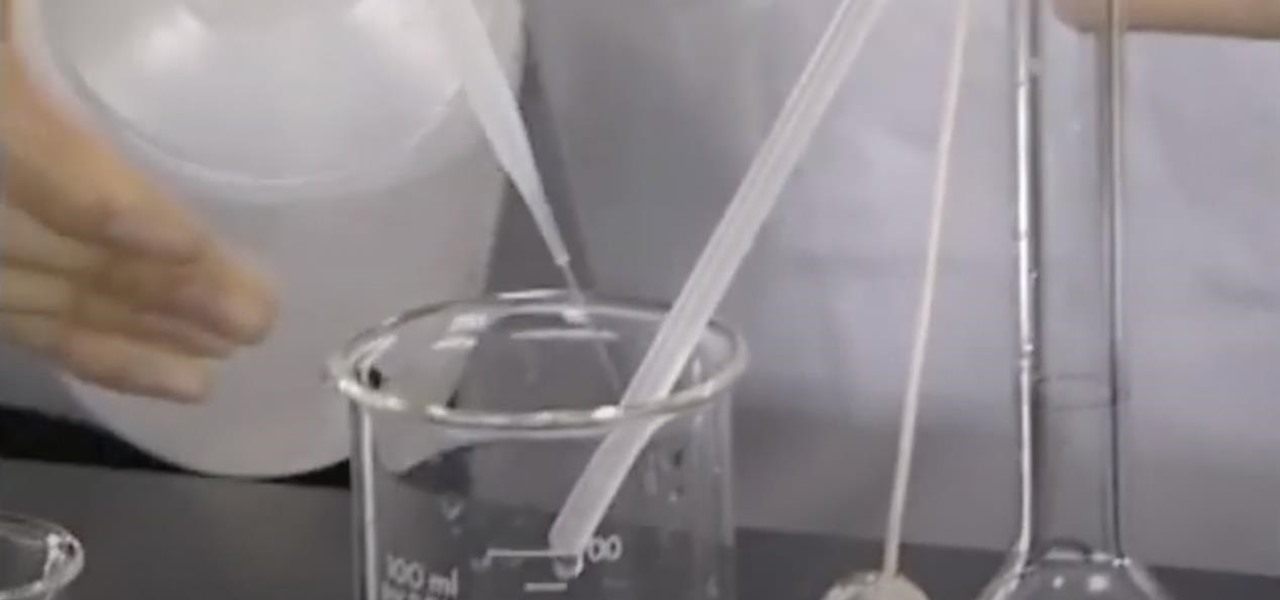
How To: Use a Volumetric Flask in the Chemistry Lab
Find out how everything in a chemistry lab works, from pipettes to burners to recrystallization to storage. You'll get precise instructions on how to work and perform certain scientific duties in the chem lab, whether it's chemical or just ordinary high school science.
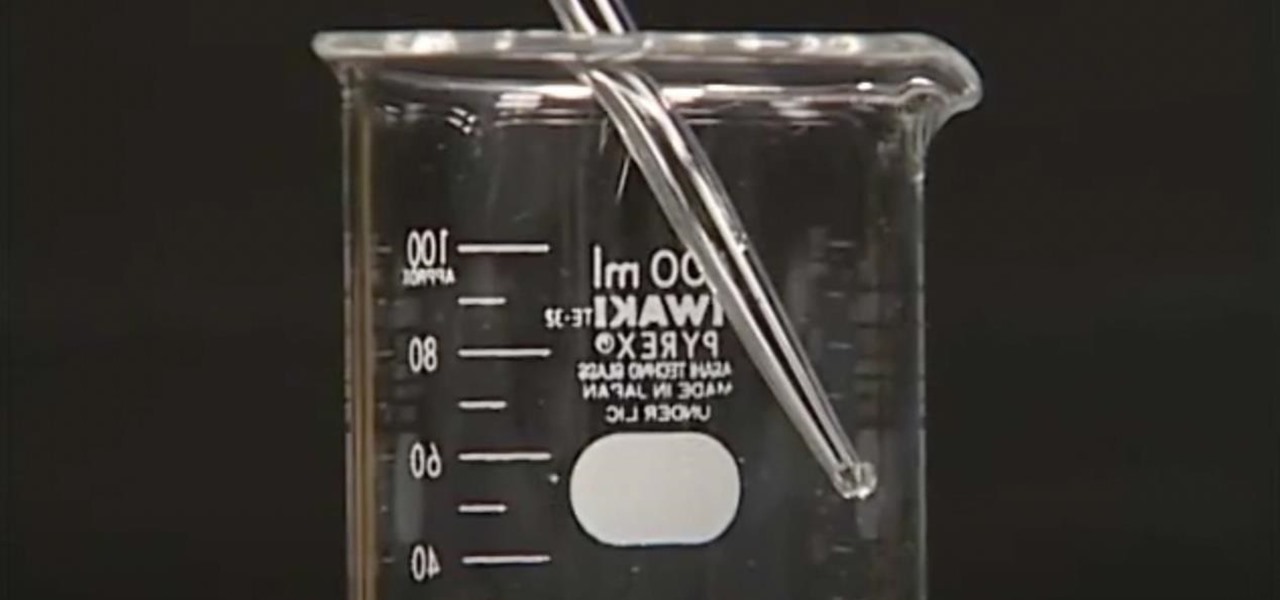
How To: Use a Volumetric Pipette and Filler in the Chem Lab
Find out how everything in a chemistry lab works, from pipettes to burners to recrystallization to storage. You'll get precise instructions on how to work and perform certain scientific duties in the chem lab, whether it's chemical or just ordinary high school science.
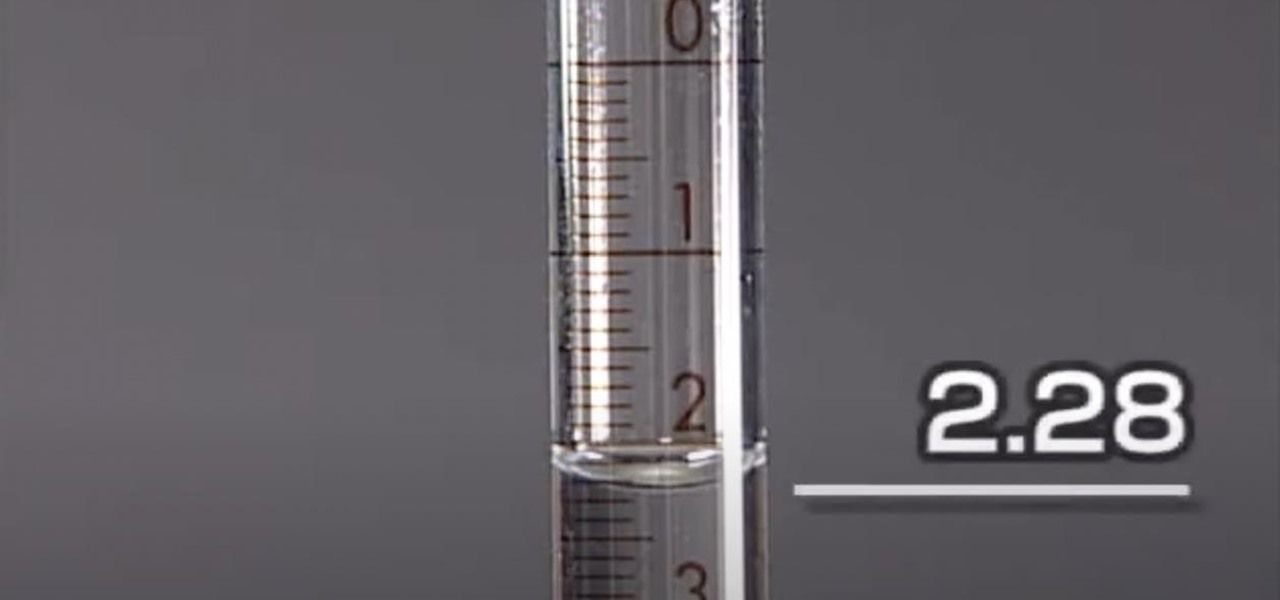
How To: Perform Titration with a Burette in the Chemistry Lab
Find out how everything in a chemistry lab works, from pipettes to burners to recrystallization to storage. You'll get precise instructions on how to work and perform certain scientific duties in the chem lab, whether it's chemical or just ordinary high school science.
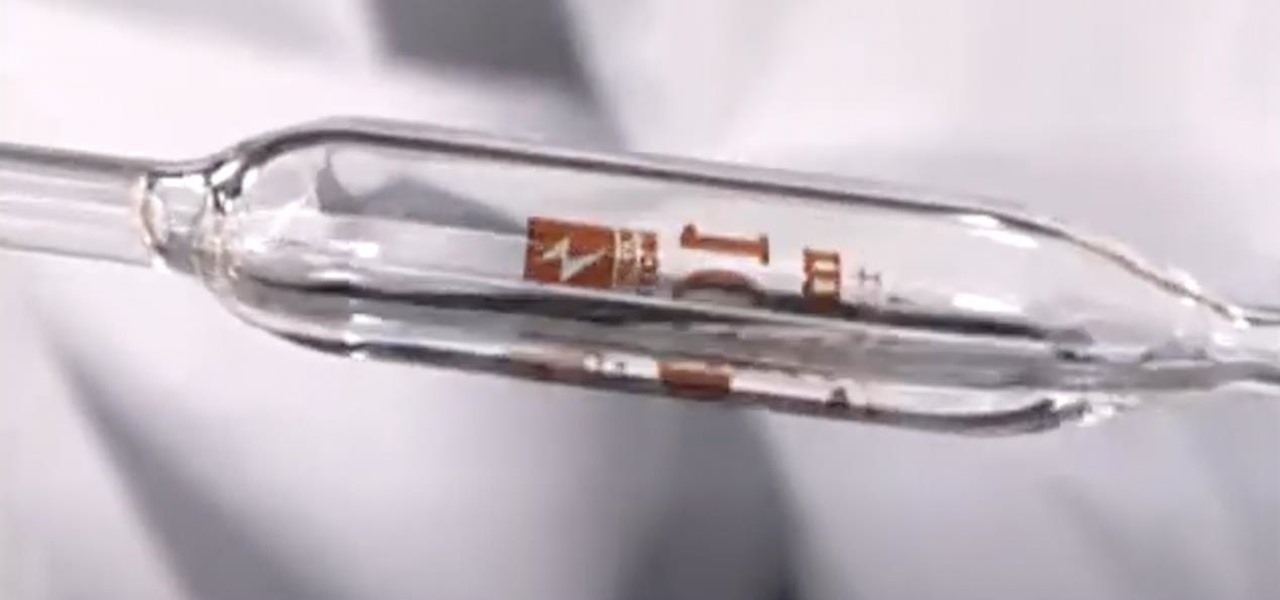
How To: Rinse Volumetric Glassware in the Chemistry Lab
Find out how everything in a chemistry lab works, from pipettes to burners to recrystallization to storage. You'll get precise instructions on how to work and perform certain scientific duties in the chem lab, whether it's chemical or just ordinary high school science.
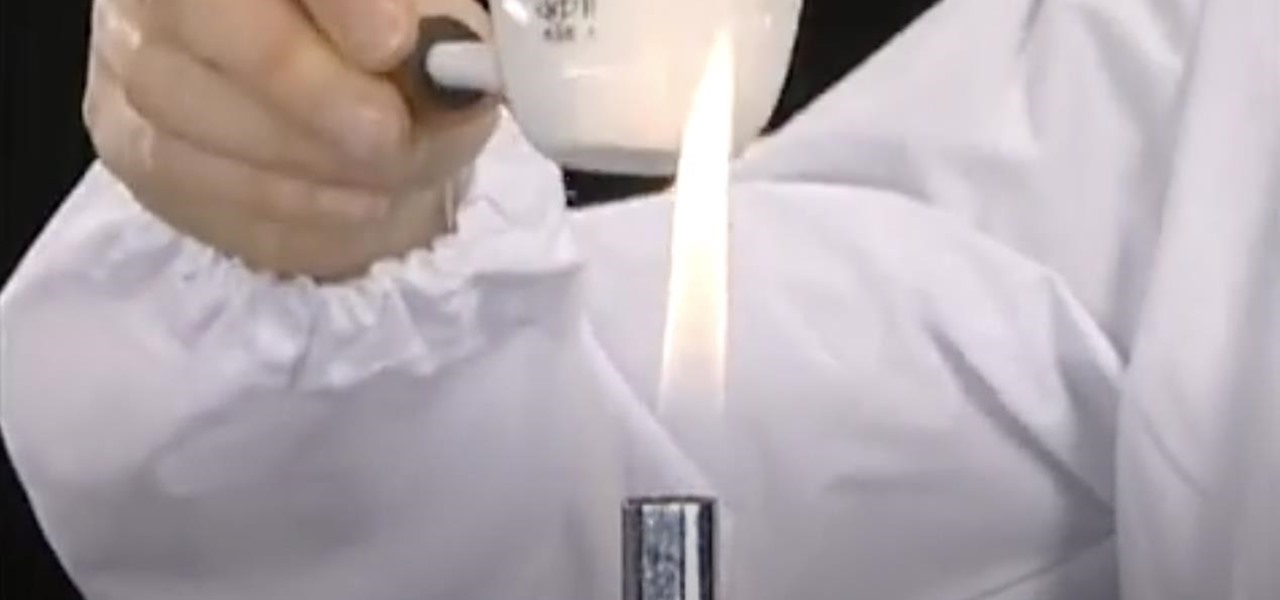
How To: Use a Bunsen Burner in the Chemistry Lab
Find out how everything in a chemistry lab works, from pipettes to burners to recrystallization to storage. You'll get precise instructions on how to work and perform certain scientific duties in the chem lab, whether it's chemical or just ordinary high school science.
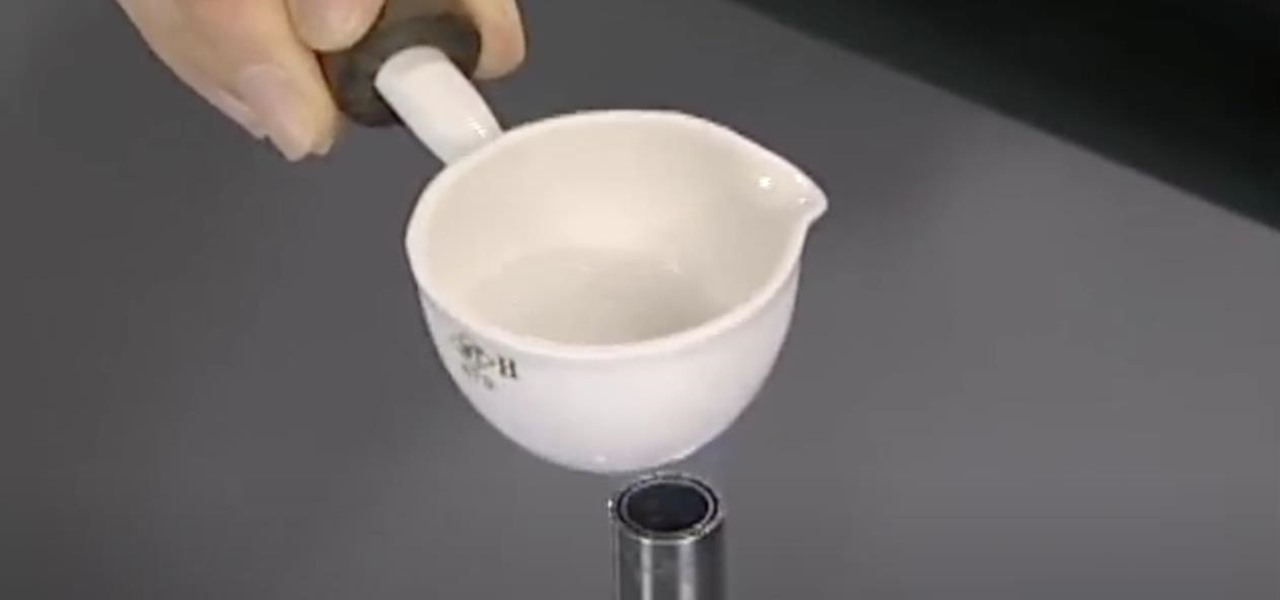
How To: Heat Liquids with a Casserole in the Chemistry Lab
Find out how everything in a chemistry lab works, from pipettes to burners to recrystallization to storage. You'll get precise instructions on how to work and perform certain scientific duties in the chem lab, whether it's chemical or just ordinary high school science.

How To: Separate by Pipette Drawing in the Chemistry Lab
Find out how everything in a chemistry lab works, from pipettes to burners to recrystallization to storage. You'll get precise instructions on how to work and perform certain scientific duties in the chem lab, whether it's chemical or just ordinary high school science.
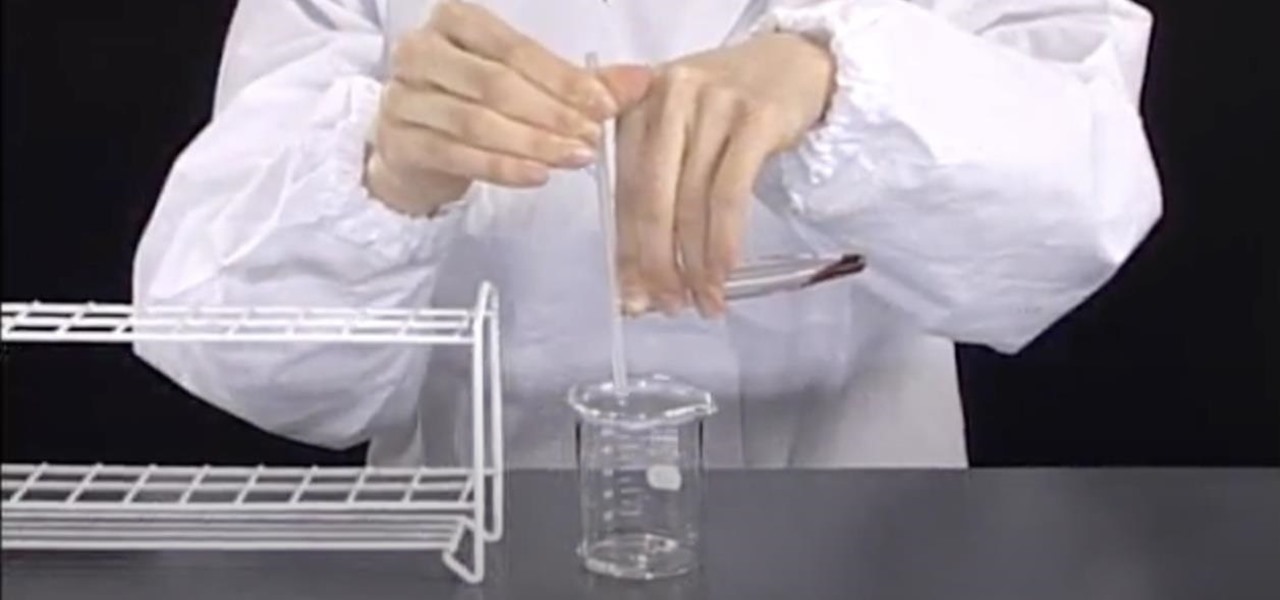
How To: Perform Separation by Decantation in the Chemistry Lab
Find out how everything in a chemistry lab works, from pipettes to burners to recrystallization to storage. You'll get precise instructions on how to work and perform certain scientific duties in the chem lab, whether it's chemical or just ordinary high school science.
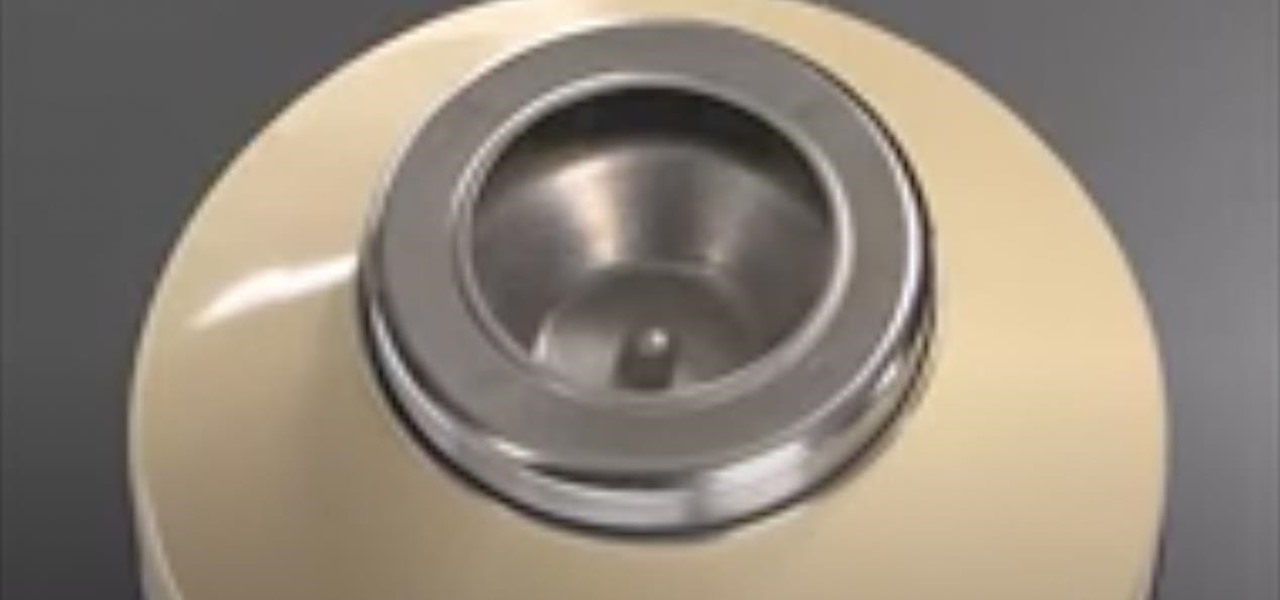
How To: Perform Centrifugation in the Chemistry Lab
Find out how everything in a chemistry lab works, from pipettes to burners to recrystallization to storage. You'll get precise instructions on how to work and perform certain scientific duties in the chem lab, whether it's chemical or just ordinary high school science.
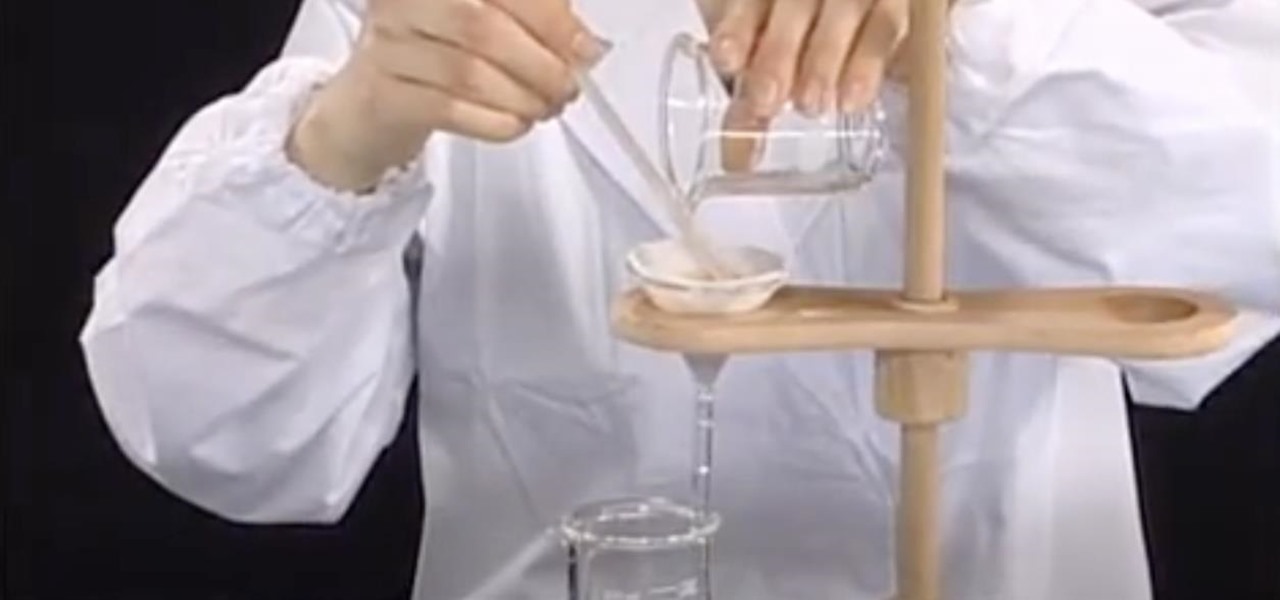
How To: Perform Gravity Filtration in the Chemistry Lab
Find out how everything in a chemistry lab works, from pipettes to burners to recrystallization to storage. You'll get precise instructions on how to work and perform certain scientific duties in the chem lab, whether it's chemical or just ordinary high school science.
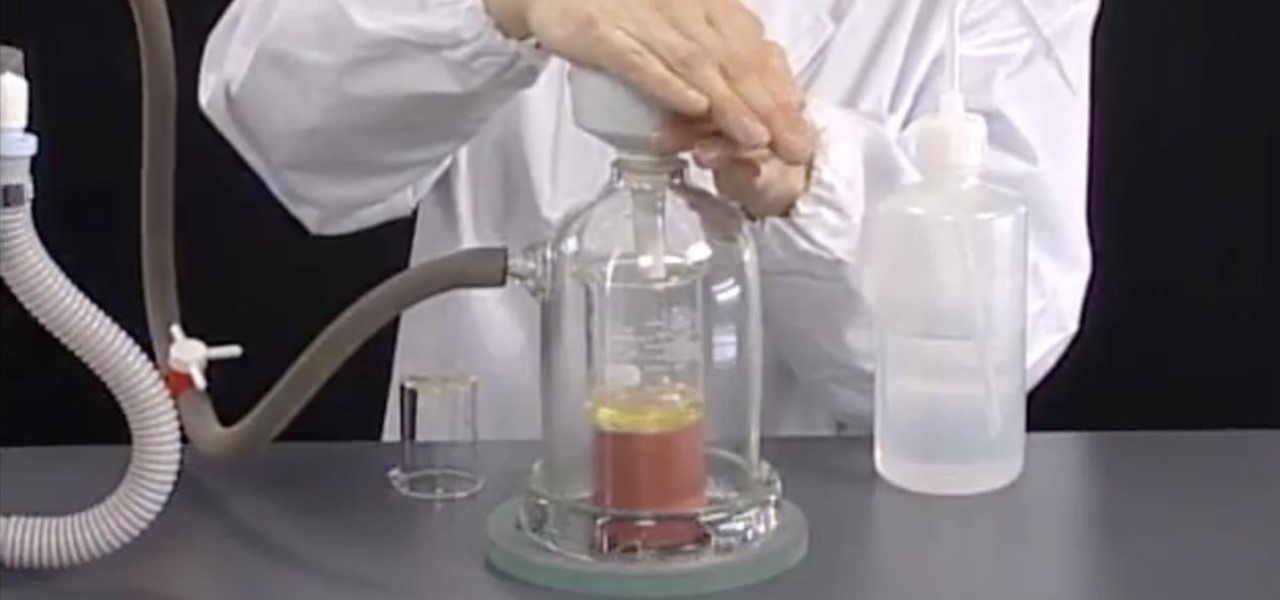
How To: Perform Vacuum Filtration in the Chemistry Lab
Find out how everything in a chemistry lab works, from pipettes to burners to recrystallization to storage. You'll get precise instructions on how to work and perform certain scientific duties in the chem lab, whether it's chemical or just ordinary high school science.
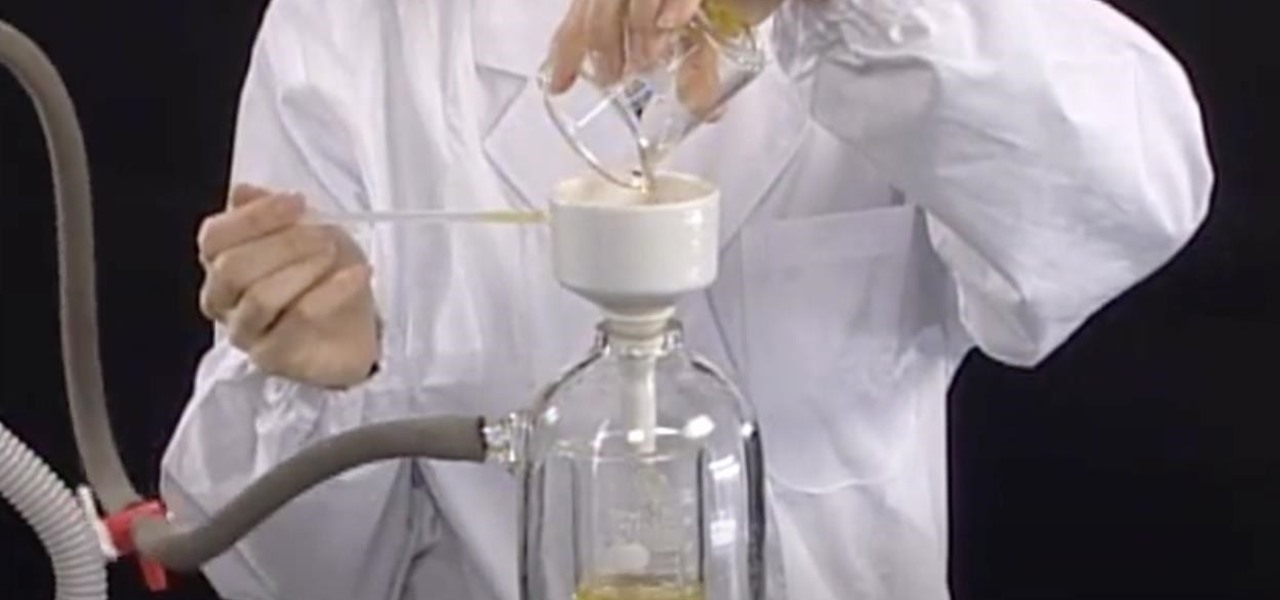
How To: Do Hot Filtration & Recrystallization in the Chem Lab
Find out how everything in a chemistry lab works, from pipettes to burners to recrystallization to storage. You'll get precise instructions on how to work and perform certain scientific duties in the chem lab, whether it's chemical or just ordinary high school science.
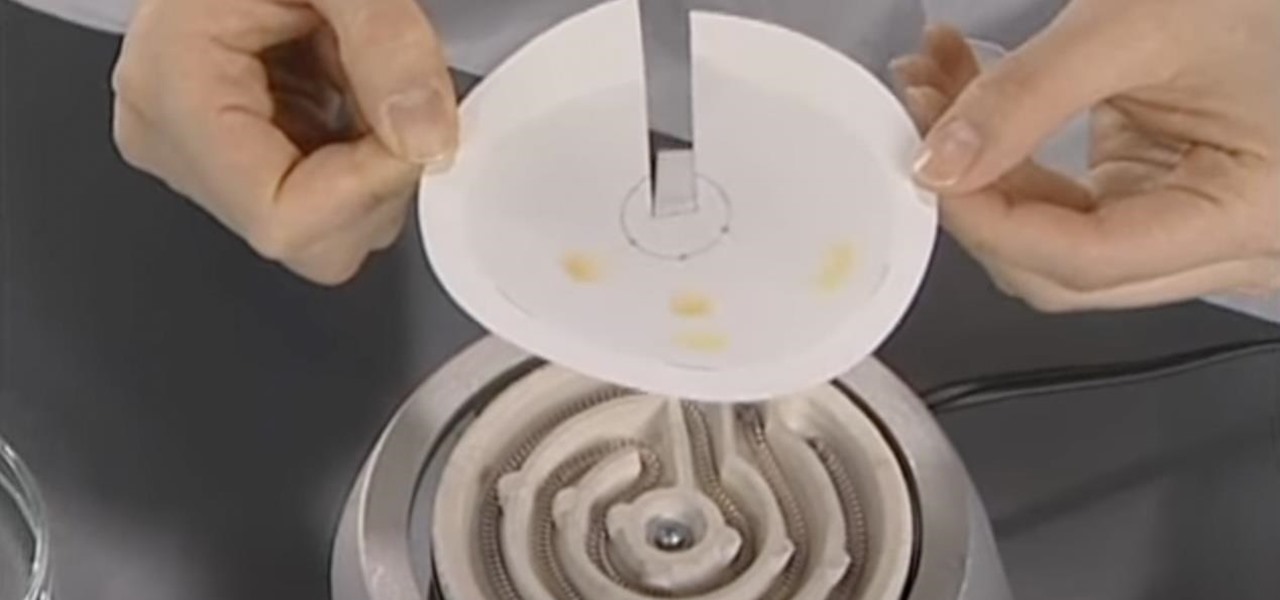
How To: Perform Paper Chromatography in the Chemistry Lab
Find out how everything in a chemistry lab works, from pipettes to burners to recrystallization to storage. You'll get precise instructions on how to work and perform certain scientific duties in the chem lab, whether it's chemical or just ordinary high school science.
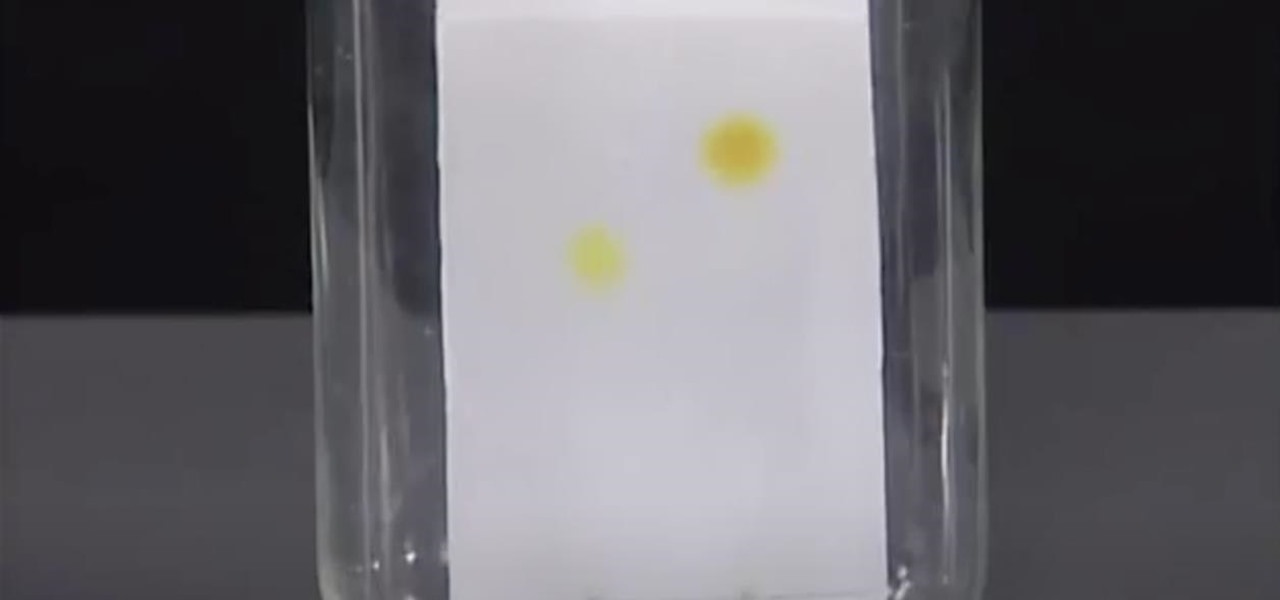
How To: Perform Thin-Layer Chromatography in the Chemistry Lab
Find out how everything in a chemistry lab works, from pipettes to burners to recrystallization to storage. You'll get precise instructions on how to work and perform certain scientific duties in the chem lab, whether it's chemical or just ordinary high school science.
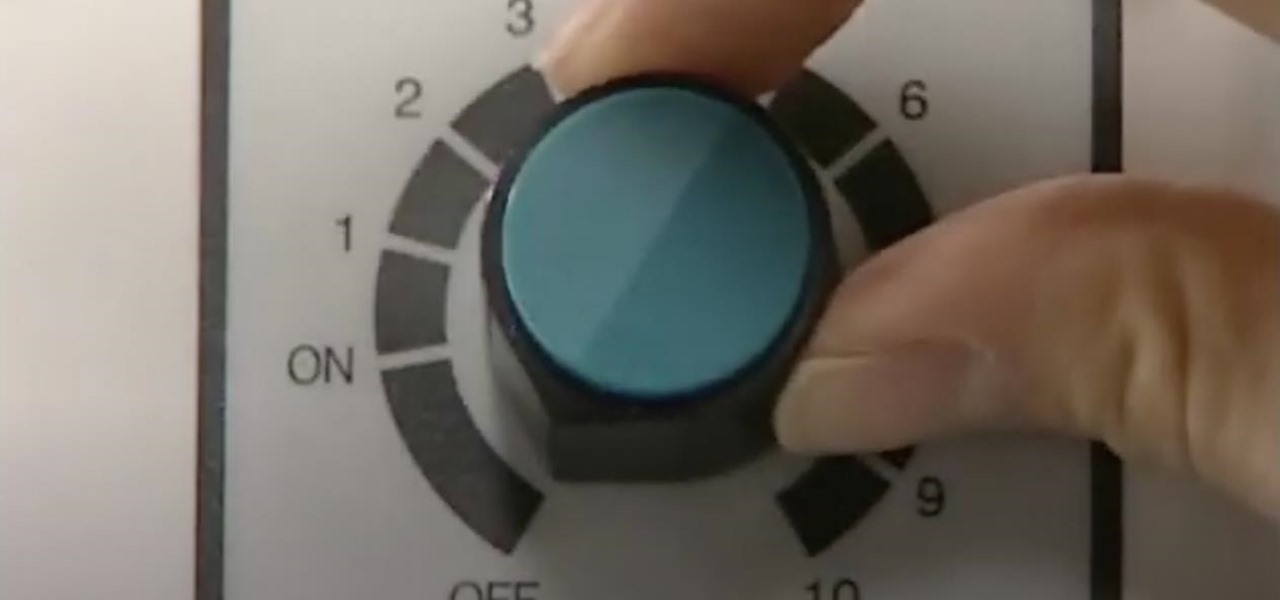
How To: Measure the Melting Point in the Chemistry Lab
Find out how everything in a chemistry lab works, from pipettes to burners to recrystallization to storage. You'll get precise instructions on how to work and perform certain scientific duties in the chem lab, whether it's chemical or just ordinary high school science.
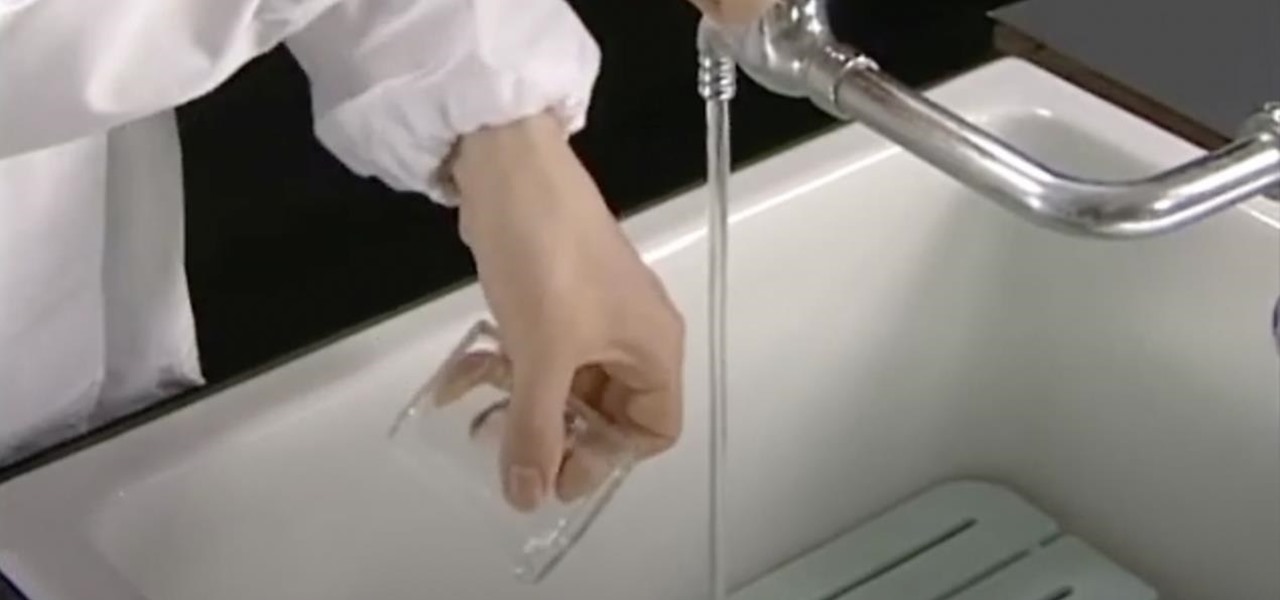
How To: Dispose of Liquid Wastes from Chemistry Labs
Find out how everything in a chemistry lab works, from pipettes to burners to recrystallization to storage. You'll get precise instructions on how to work and perform certain scientific duties in the chem lab, whether it's chemical or just ordinary high school science.
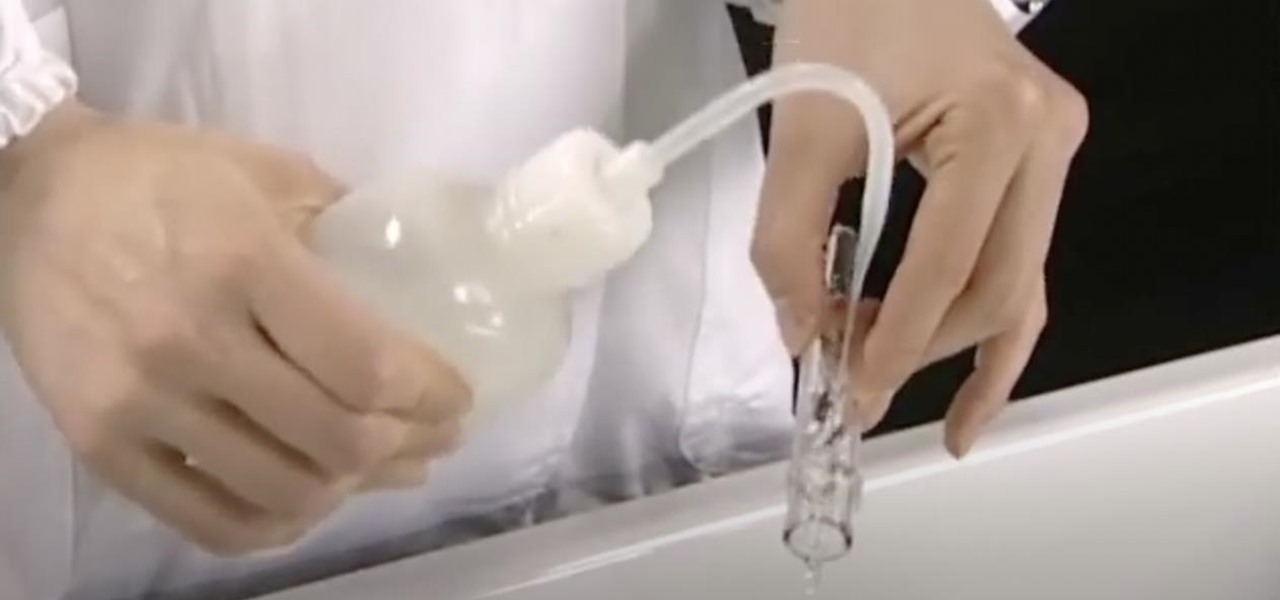
How To: Wash Laboratory Glass Apparatuses in the Chemistry Lab
Find out how everything in a chemistry lab works, from pipettes to burners to recrystallization to storage. You'll get precise instructions on how to work and perform certain scientific duties in the chem lab, whether it's chemical or just ordinary high school science.

How To: Store Crystalline Chemistry Samples in Storage Paper
Find out how everything in a chemistry lab works, from pipettes to burners to recrystallization to storage. You'll get precise instructions on how to work and perform certain scientific duties in the chem lab, whether it's chemical or just ordinary high school science.

How To: Make a maglev motor
Ian uses round magnets, pencil, clay and glass slide to work his magic science experiment. Magentic levitation is said to be a solution for energy costs of trains because it cuts down friction and creates what is mythically regarded as a perpetual energy motor. This is an interesting toy model of how the maglev trains and large scale generators work

How To: Make chemical stalagmites
Check out this science experiment video on how to chemical stalagmites. Chemist Chris Schrempp (star high school teacher and author of the book Bangs, Flashes, and Explosions) walks host Chris Hardwick through the process of making chemical stalagmites and some cool exothermic reactions similar to hand warmers.
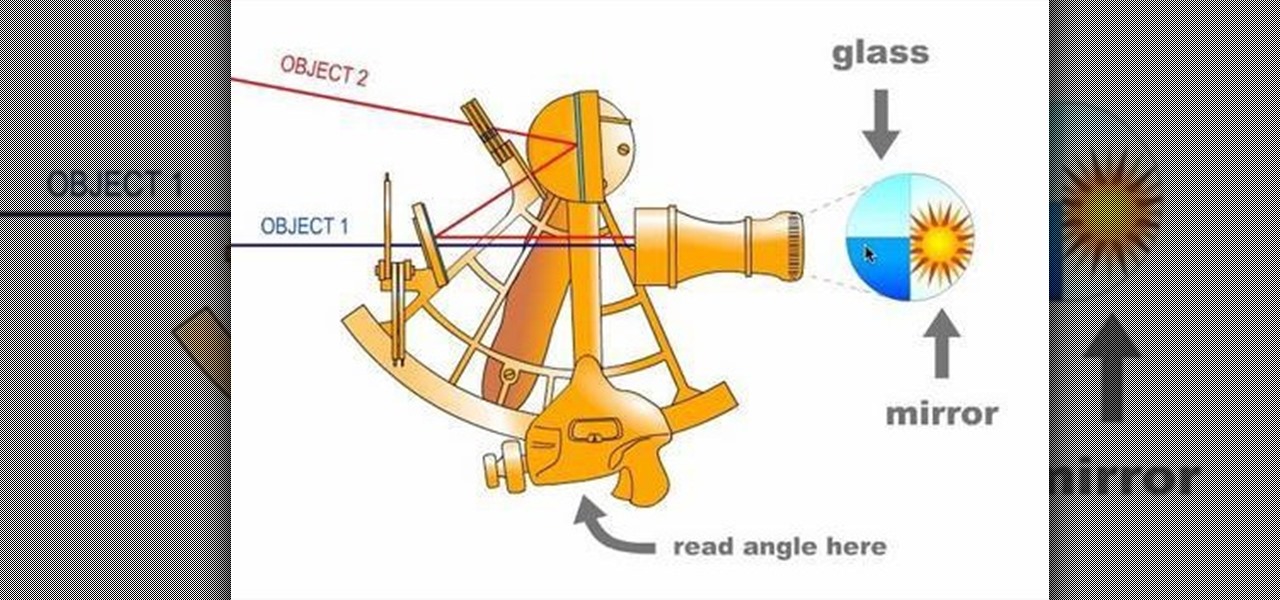
How To: Find south, latitude and longitude with the Sun
Learn how to find south, your latitude, and your longitude with only a few household items and some know-how, just by watching this science video tutorial. However, if using the homemade quadrant cited, the precision of your findings will be rather low. Don't worry, you'll be within a few hundred miles though.

How To: Balance an object with center of gravity underneath
For an object to balance, you have to have the center of gravity directly above the base. Well, reverse that to see that you can also balance an object by having the center of gravity directly below its base.
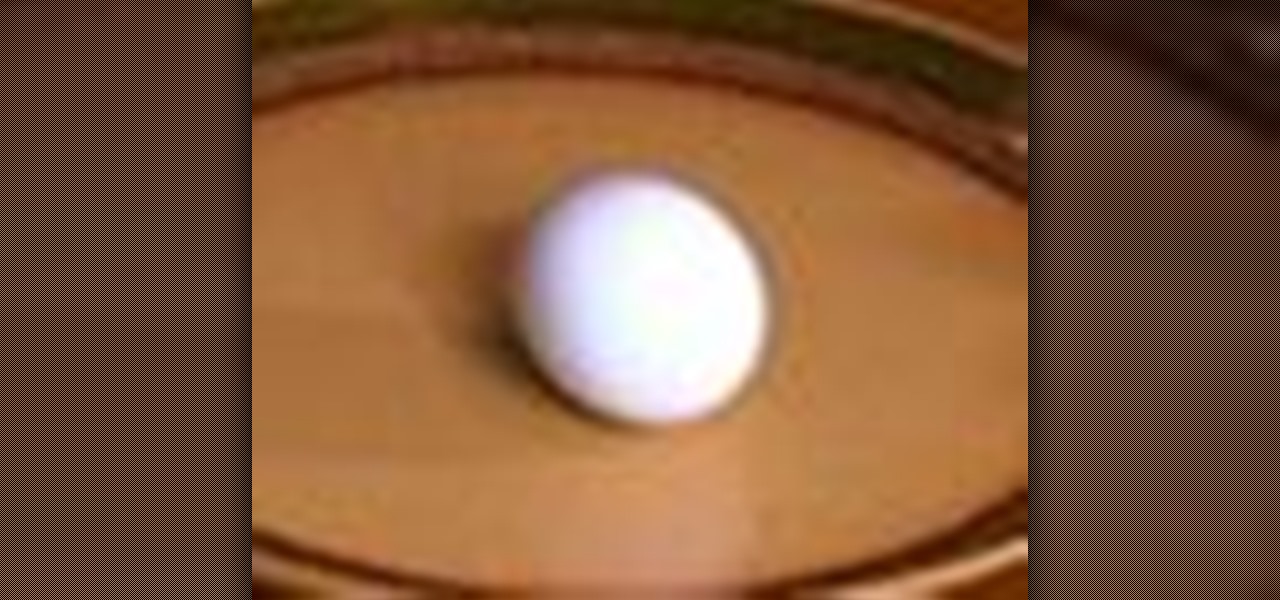
How To: Tell if an egg is raw or boiled with Krampf
You can easily tell if an egg is raw or hard boiled without breaking the shell, as long as you know a little science. This experiment uses physics to show how if you spin an egg you can tell if it's insides are viscous or solid! Thanks Happy Scientist Robert Krampf for this great tutorial on the science of eggs and physics of rotation.
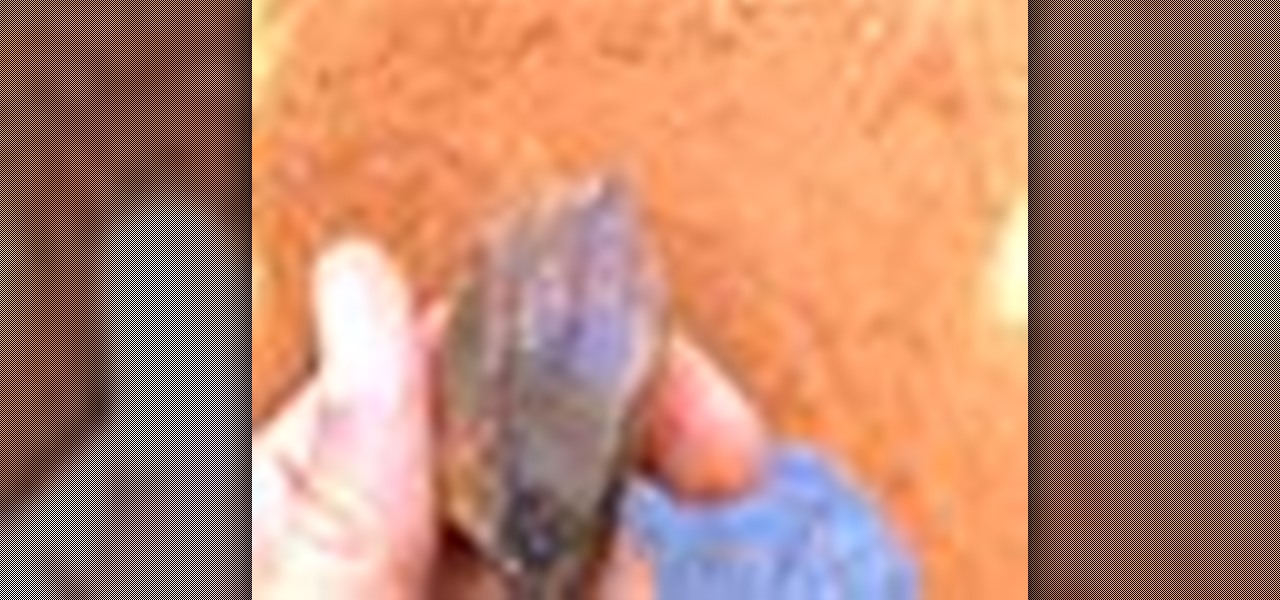
How To: Form hydrothermal quartz
How can hot water form beautiful quartz crystals? This mine is red Georgia clay, with veins of minerals running through it. The veins are hydrothermal. Hydro means water. Thermal means heat. So the veins were caused by hot water. But how could hot water form quartz crystals?

How To: Make a colorful density bottle
Watch this video tutorial to see how to make a colorful density bottle. To do this science lab experiment, you'll need food coloring, a plastic bottle, clear baby oil and extra things to put into the bottle, like glitter or sparkles.







